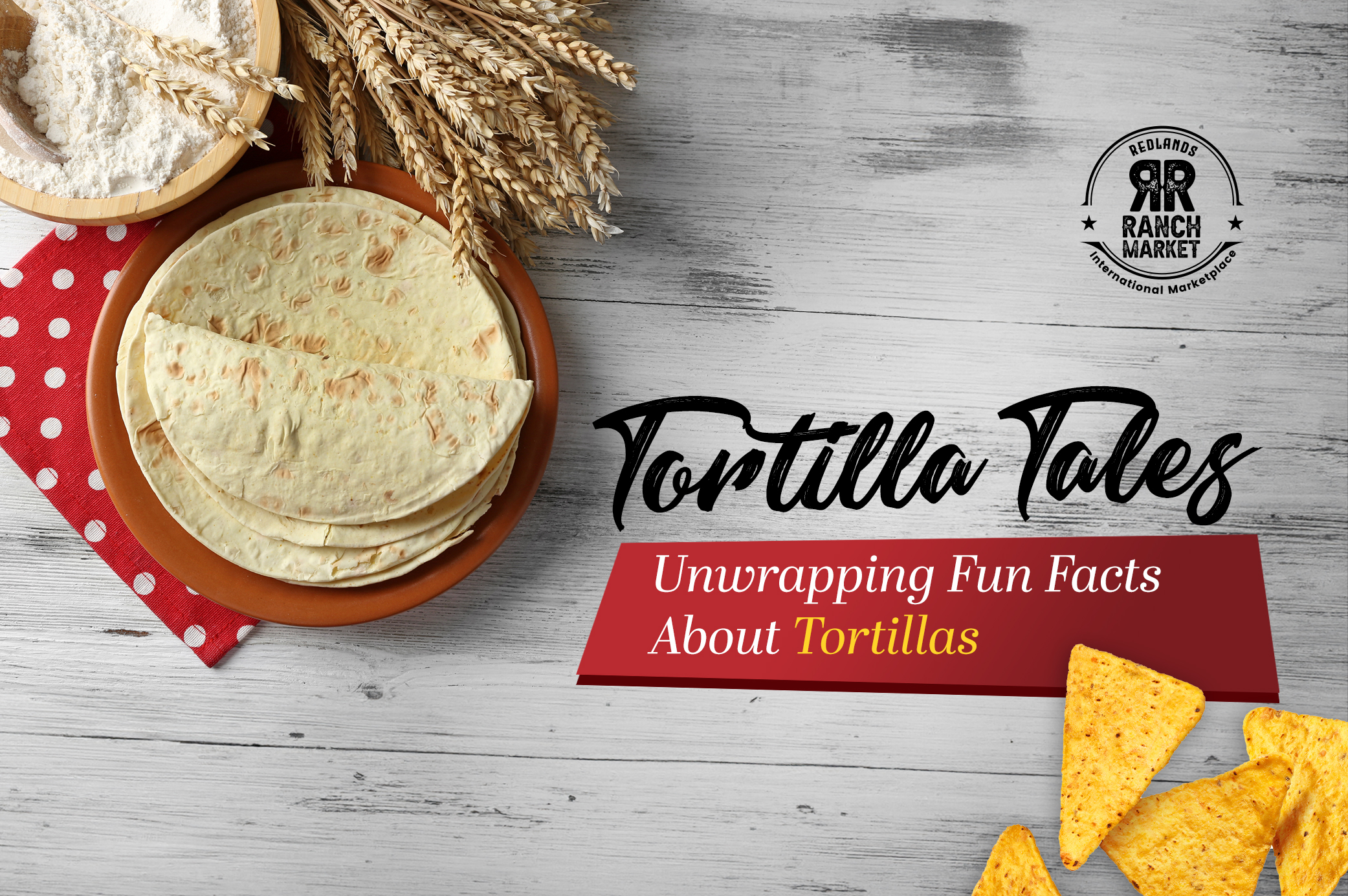Overview: Tortillas may seem basic, but they’re as rife with history as they are versatile. Journey through time and taste with us as we uncover the rich heritage behind this seemingly simple flatbread. From ancient traditions to modern twists, explore the cultural significance that transforms tortillas into more than just an ingredient!
Tortillas are a versatile and beloved staple in many cuisines around the world. Whether you’re enjoying a soft, flour tortilla filled with savory ingredients or enjoying the slightly charred edges of a fried corn tortilla, these flatbreads are always perfect for a holiday feast or just a casual meetup with your friends!
But you know what’s even more interesting? Beyond its role as a canvas for delicious fillings, the tortilla boasts a rich history, diverse regional variations, and surprising health benefits. From the ancient civilizations of Mesoamerica to the bustling kitchens of contemporary food enthusiasts, tortillas have woven their way into the fabric of global cuisine.
In this blog post, we’ll unwrap the intriguing world of tortillas and explore some fun facts that might surprise you.
Ancient Origins
Tortillas have ancient roots, dating back thousands of years to Mesoamerican civilizations. The Aztecs and Mayans are credited with the invention of tortillas, using maize (corn) as a primary ingredient.
The process of making tortillas involved grinding maize into masa, a dough that was then flattened and cooked on a hot surface. This ancient method laid the foundation for the tortillas we know and love today.
Versatility in Ingredients
While corn tortillas are traditional in Mexico and Central America, there’s a world of variety when it comes to tortilla ingredients. Flour tortillas, made with wheat flour, gained popularity in the northern regions of Mexico and have become a staple in Tex-Mex cuisine. Additionally, modern variations include spinach, whole wheat, and even gluten-free options, showcasing the adaptability of this simple yet essential food item.
Here are 30 Tortilla Wrap Recipes that might interest You!
Tortillas in Space
Believe it or not, tortillas have made their way beyond our planet! Since the mid-1980s, NASA has provided astronauts with specially prepared tortillas as part of their space diet.
These flatbreads were chosen as a better alternative to traditional bread due to their crumb-free nature, which posed fewer problems in the microgravity environment of the spacecraft.
The Taco Revolution
Tacos, a popular dish using tortillas, have experienced a global surge in popularity. From street vendors to high-end restaurants, tacos have become a cultural phenomenon.
The variety of fillings, from classic carne asada to innovative vegetarian options to foods from other cultures’ cuisines, showcases the adaptability of tortillas to a wide range of flavor profiles.
Tortilla Art
In recent years, tortillas have transcended their culinary purpose and entered the realm of art! Talented artists have taken to using tortillas as a canvas for intricate designs and illustrations. This unique form of art not only showcases creativity but also highlights the cultural significance of tortillas as a symbol of identity and tradition.
Tortilla World Records
For some reason, the tortilla is a popular choice for people attempting to set food-based world records.
According to Guinness, the world’s longest tortilla was made in La Paz, Mexico in 2010, and measured an astonishing 1.49 miles long! It was then used to create the world’s largest burrito, which weighed over 12,000 pounds.
Meanwhile, the record for “tallest tortilla tower” was set in 2020, when Angel Zayas made a stack of tortillas measuring 32.1 inches high. And in 2020, Oliver Miles broke the record for throwing a tortilla when he tossed one over 90 feet! Chances are there are still more tortilla-related records to be broken. Maybe you’ll be the next one to break a record!
Health Benefits of Corn Tortillas
Corn tortillas not only offer a delicious foundation for your favorite fillings but also come with health benefits. Rich in fiber, essential nutrients, and gluten-free, corn tortillas are a nutritious choice for those with dietary restrictions or health-conscious eaters.
The traditional nixtamalization process, where corn is soaked in an alkaline solution, not only enhances flavor but also increases nutrient absorption.
>> Related Reading: How to Nixtamalize Corn for Tortillas, Tamales, Posole, and More
DIY Tortilla Making
Why not try your hand at making tortillas from scratch? With just a few simple ingredients like masa harina (corn flour), water, and a pinch of salt, you can create your own homemade tortillas. It’s a rewarding process that allows you to appreciate the craftsmanship behind this culinary staple.
Experiment with different types of fillings and sauces to make your tortilla creations uniquely yours.
Here’s a guide on How to Make Homemade Tortillas Recipe that you might find helpful!
Tortillas and Sustainability
For environmentally conscious readers, it’s interesting to note that traditional corn tortillas have a smaller ecological footprint compared to some other bread alternatives.
Corn is a hardy and sustainable crop, and the traditional methods of tortilla production often involve fewer resources than industrial bread manufacturing. Choosing locally sourced and organic ingredients further enhances the sustainability of your tortilla-centric meals.
>> Read more on How Does a Spanish Tortilla Become Climate Friendly
Regional Tortilla Varieties
Just as different regions have unique culinary traditions, tortillas also showcase remarkable regional variations. In Northern Mexico, flour tortillas are often larger and thinner, perfect for wrapping hearty fillings. In contrast, the smaller, thicker corn tortillas of Central and Southern Mexico are well-suited for street tacos.
Exploring these regional nuances can add depth and authenticity to your tortilla experience.
Tortilla Storage and Revival
Ever faced the challenge of tortillas turning dry or stale? Fear not! To keep your tortillas fresh, store them in an airtight container or ziplock bag. If they become slightly dry, a quick warm-up on a dry skillet or in the microwave with a damp paper towel can revive their softness. Knowing the tricks of tortilla preservation ensures that every meal feels as fresh as the first.
In Summary
Tortillas, with their ancient origins and modern adaptability, have become an integral part of global cuisine. From their role in traditional dishes to their unexpected journey into space, tortillas continue to captivate and surprise.
So, the next time you enjoy a taco or a quesadilla, take a moment to savor not just the flavors but the rich history and fun facts wrapped up in every delicious bite.
And if you’re looking to enjoy some delicious handmade tortillas, turn to Redlands Ranch Market!


